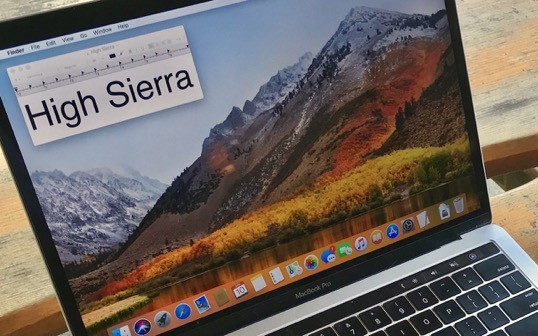Upgrade madness from Apple
It’s upgrade season at Apple, and your only goal is to avoid going nuts while managing through the process. There are some important alerts here from CranstonIT, so be sure not to miss them.
There are new releases of macOS®, iOS, watchOS and tvOS, and once they are available for free download, your challenge is to decide when to install them. The operative word is when, because there is no harm in delaying major OS upgrades until Apple has had the chance to squash the initial bugs and you have the time to focus on the task. But just don’t wait too long — as it may put you at risk of security vulnerabilities and prevent you from taking advantage of new integrations within the Apple ecosystem.
Let’s take it from the top.
According to High Sierra's system requirements, the new macOS will function on any Mac now running its predecessor: MacBook® and iMac® from late 2009 on; MacBook Pro®, Mac mini® and Mac Pro® from mid-2010 on; and MacBook Air® from late 2010 on.
iOS 11. Although it has received glowing reviews from the beta testers —performances leaps for both iPhone and iPad® are reported —your decision to upgrade may rest on the compatibility of the key apps you use. Check the App Store® listing for each of those critical apps to first see if they have been recently updated. If so, you are good to go. If you use an iPad, install iOS 11 only when you are prepared for a major interface change, as the new Dock, Control Center, Files app and multitasking and functionality upgrades will deliver a considerably different user experience. Although iOS 11 has a September 19 release date, it is again IMPERATIVE you delay this upgrade until the release of iOS 11.2 or until you get the go-ahead from CranstonIT.
watchOS 4. Scheduled for September 19 release, this upgrade won’t quite be the leap taken to watchOS 3. But it will reflect new Siri® features, a set of new watch faces, and some improved fitness tracking capabilities — especially in the area of heart rate monitoring. The most used heart rate monitor in the world, according to Apple, will now show your heart rate on the face of the Apple Watch, so wearers can view it at a glance when raising their wrists.
With no notable downside to upgrading, you should consider moving to watchOS 4 after you take your iPhone to iOS 11.
tvOS 11. This will be your easiest upgrade decision. If you have a fourth generation Apple TV, either allow it to upgrade itself to tvOS 11 or manually invoke the upgrade. It’s easy: Settings > System> Software Updates. The biggest change with tvOS 11 is the ability to support 4K on TV; however it brings under the hood stability improvements as well. You will especially enjoy the automatic dark and light modes and the support for AirPods® and AirPlay® 2. tvOS 11 also has a September 19 release date

